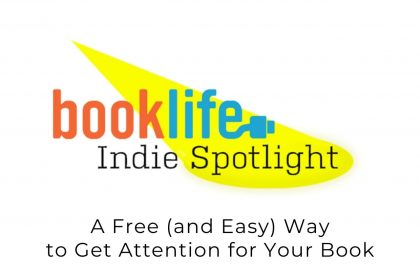
Authors Note:
This article originally appeared as an Ingram Spark Blog in May of 2017 and is updated on the New Shelves site every few months. We have just gone through and updated the width and height advice and examples from top publishers for Fall 2020. Pricing information has also been added so we can see how books are being priced right now for the upcoming season.
Start with Market Research
Your book has been written, rewritten, beta read, edited and re-edited to within an inch of its life. Now it is time to design and layout the interior. One of the first decisions you will be asked to make is the height and width of the book. This is called the trim size. So you go to your bookshelf and pull down your favorite four books and notice that they are all 6×9. There! Decision made! But not so fast.
Here are the questions you should ask yourself when choosing your trim size based on other books.
- Are the books you’re comparing to in the same genre?
- Are the books the same format? Is yours a paperback and the one you’re holding a hardcover?
- Is the book you’re holding more than 2 years old?
- Is the book you’re holding published by an established publisher?
Here is the thing that stumps a lot of us. We like what we like, but often our tastes are not quite in line with what people are buying today. (I know . . . it depresses me too.)
So instead of turning to your own bookshelf, when choosing a trim size of a book you are about to publish; the decision should be based on these factors instead:
- What is the best trim size for YOUR category according to customer purchase habits within the last year?
- What sizes are established publishers using for their books in your category?
- How will the trim size affect a book industry professional’s opinion of your book?
- Does the trim size you chose dramatically impact the page count and print pricing of your book?
There are a few steps you can take to determine the best trim size for your book. We can’t tell you what trim size you should make your book. As a publisher, that is your call. However, each month, New Shelves goes through the USA Today bestseller list, the Amazon top-sellers, and the New York Timesbestseller lists and compile a list of the most common trim sizes they all have. The list below will tell you what sizes more people are purchasing in your category at the publication of this blog post. This list also tells you what sizes established publishers are choosing based on their research. (We LOVE borrowing research from companies that have a lot more money than us.)
The real purpose of this list is to allow you to see what established publishers (best-selling publishers) are doing with their trim sizes in your category. Why do we care? Because book buyers, booksellers, librarians, even some savvy consumers are lead and “trained” to think of professionally published books as the standard. If Random House, Simon & Schuster, and HarperCollins all agree that 6×9 is not a great trim size for general fiction paperbacks, then your 6×9 general fiction paperback will look a little out of place.
One reason to choose one trim size over another would be print pricing. For example, a 6×9 book will take up fewer pages than a 5×8 book. If the smaller trim size pushes your page count out to a point where you cannot afford to print the book, then the larger print size makes more sense. But just defaulting to a certain trim size because you like the size or you think that it will remind readers of a hardcover is not a great idea.
We have compiled for you a list of the most common categories, and researched the most common trim sizes for the bestselling books in each category in Fall of 2020.
Many of the trim sizes were so close to sizes available at IngramSpark that if they were a 10th of an inch or less different, we referenced IngramSpark’s available sizes.
What is clear, is that if you want to emulate a successful publishing house (hint: you do), then you should consider the following trim sizes. All sizes are paperback unless noted as HC.
- General Fiction 5X8, 5.25X8.25, 5.25×8
- General Non-Fiction 5.5×8.5
- Thrillers/Mysteries 5.25×8, 5X8
- YA General Fiction 5×7
- YA Dystopian, Fantasy, and Sci-Fi 5.5×8.5, 5.25 X 8
- General Self Help 5.25×8, 5.5X8.5
- Inspirational/Spiritual 5×8, 5.25X8
- Memoir 5.25×8
- Reference 6×9 and 7×10
- Middle-Grade Fiction 5×8
- Picture Books PB 8×8
- Picture Books HC 10X10
- Business 5.5×8.5
As for pricing?
The prices are VERY consistent in the categories. I found most upcoming releases were prices within a DOLLAR of each other.
- General Fiction $16.00
- General Non-Fiction $17.00
- Thrillers/Mysteries PB $14
- Fiction HC $28
- General Self Help $17
- Inspirational/Spiritual $16
- Memoir LOTS of Hardcovers at $26
- Picture Books PB $8
- Picture Books HC $18
- Health A great many Hardcovers at $28-29. Paperbacks at $18
The bottom line is this…
Go to your local bookstore’s websites and get on Amazon. See what the major houses (your biggest competition) is doing with their trim sizes and pricing. You can still choose to print in any size you wish, but you should know what the market is looking for right now. Buyers are human and like things that look like previous successes. Why not borrow from that phenomenon where you can?








